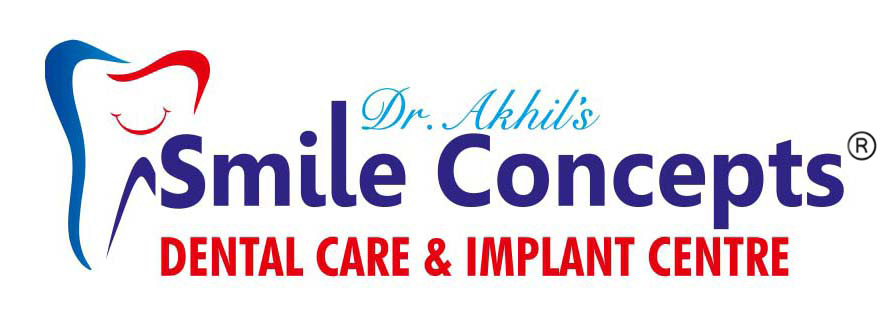Periodontology or periodontics is the specialty of dentistry that studies supporting structures of teeth, as well as diseases and conditions that affect them. A periodontist is a dentist that specializes in the prevention, diagnosis and treatment of periodontal disease.


Periodontal disease, also known as gum disease, is a set of inflammatory conditions affecting the tissues surrounding the teeth. In its early stage, the gums become swollen, red, and may bleed. In its more serious form, the gums can pull away from the tooth, bone can be lost, and the teeth may loosen or fall out. Bad breath may also occur. Gum diseases can be treated by ultrasonic scaling or cleaning of the teeth, periodontal flap surgery, root planning and bone grafting procedures. Ultrasonic scaling san be done in a single visit. Treatment duration of periodontal flap surgery depends on the extent of the gum disease. The flap surgery is usually done under local anaesthesia or under conscious sedation. Periodontal treatment can be non surgical or surgical
Nonsurgical treatments
If periodontitis isn't advanced, treatment may
involve less invasive procedures, including:
• Scaling. Scaling removes bacteria from your tooth
surfaces and beneath your gums. It may be performed
using instruments, a laser or an ultrasonic
device.
• Root planing. Root planing smooths the root
surfaces, and removes bacterial byproducts that
contribute to inflammation and delay healing or
reattachment of the gum to the tooth surfaces.
• Antibiotics. Topical or oral antibiotics can help
control bacterial infection. Topical antibiotics can
include antibiotic mouth rinses or insertion of gels
containing antibiotics in the space between your
teeth and gums or into pockets after deep cleaning.
However, oral antibiotics may be necessary to
completely eliminate infection-causing bacteria.
Surgical treatments
If you have advanced periodontitis, treatment may
require dental surgery, such as:
• Flap surgery (pocket reduction surgery). Your
periodontist makes tiny incisions in your gum so
that a section of gum tissue can be lifted back,
exposing the roots for more effective scaling and
root planing. Because periodontitis often causes
bone loss, the underlying bone may be recontoured
before the gum tissue is sutured back in place.
After you heal, it's easier to clean these areas and
maintain healthy gum tissue.
• Soft tissue grafts. When you lose gum tissue, your
gumline recedes. You may need to have some of the
damaged soft tissue reinforced. This is usually done
by removing a small amount of tissue from the roof
of your mouth (palate) or using tissue from another
donor source and attaching it to the affected site.
This can help reduce further gum recession, cover
exposed roots and give your teeth a more pleasing
appearance.
• Bone grafting. This procedure is performed when
periodontitis has destroyed the bone surrounding
your tooth root. The graft may be composed of small
fragments of your own bone, or the bone may be
synthetic or donated. The bone graft helps prevent
tooth loss by holding your tooth in place. It also
serves as a platform for the regrowth of natural
bone.
• Guided tissue regeneration. This allows the
regrowth of bone that was destroyed by bacteria. In
one approach, your dentist places a special piece of
biocompatible fabric between existing bone and your
tooth. The material prevents unwanted tissue from
entering the healing area, allowing bone to grow
back instead.
• Tissue-stimulating proteins. Another technique
involves applying a special gel to a diseased tooth
root. This gel contains the same proteins found in
developing tooth enamel and stimulates the growth of
healthy bone and tissue.

LASER
Laser technology is a good option for general dental practices. Here are some of the numerous advantages of using lasers to treat periodontal diseases. Laser treatment is a tissue-preserving, regenerative, and bone-building procedure Laser treatment ensures that no tissue is subtracted or gum tissue is reduced to a lower level on purpose. It also stimulates new tissues, bone, and collagen. The body’s healing process then regenerates the lost ligaments and bone around the tooth.
benefits of laser technology for gum disease
treatment
Numerous gingivitis patients suffer from severe gum
bleeding and bone loss. Therefore, it’s critical to
remove bacteria from the teeth and gingival pockets.
Lasers provide the benefit of not only removing the
bacteria but also killing them. This helps reduce
bleeding and swelling of gums. It may even eliminate
the need for further gum disease treatment such as
gum surgery.
1. Limits bleeding
2. Can be optimized for patients
3. Shorter healing time
4. Minimally invasive
5. Preserves healthy parts of the teeth
6. Minimizes risk of bacterial infection


